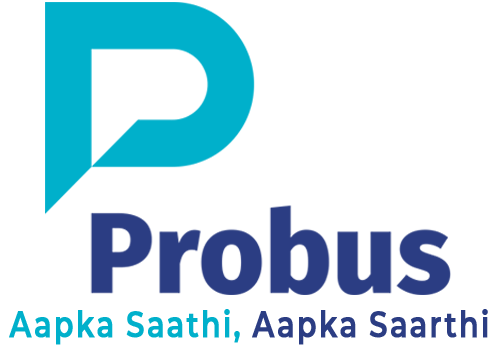Janani Suraksha Yojana (JSY) is a dedicated scheme which is launched to ensure safe motherhood as a part of the National Health Mission. The main goal of this initiative is to reduce the number of deaths among mothers and newborns. Furthermore, the scheme encourages poor pregnant women to give birth in hospitals or health centres rather than at home.
The scheme was launched on April 12, 2005, by the Prime Minister of India and is now active across all states and Union Territories, with special attention given to areas with lower health performance. On top of that, JSY is funded by the central government and provides financial assistance to mothers for both delivery and care after childbirth. The major highlight of the scheme is the role of the Accredited Social Health Activist (ASHA) who acts as a bridge between pregnant women and the government, which ensures they receive the support and information they need.
Read on to learn more about Janani Suraksha Yojana in detail!
Eligibility Criteria
Here are the eligibility criteria for the Janani Suraksha Yojana.
| Parameters | Details |
| Low Performing States (LPS) | All pregnant women delivering in government health centres such as Sub centres (SCs)/Primary Health Centres (PHCs) / Community Health Centres (CHCs) / First Referral Units (FRUs) / general wards of district or state hospitals. |
| High-Performing States | All BPL/Scheduled Caste/Scheduled Tribe (SC/ST) women delivering in a government health centre such as SC/PHC/CHC/FRU/ general wards of the district or state hospital. |
| LPS & HPS | BPL/SC/ST women in accredited private institutions. |
What are the Objectives of the Janani Suraksha Yojana?
There is no denying the fact that health insurance policies offered by private health insurance service providers are often not accessible to everyone, particularly to small or marginalized sections of the community. In response to this gap, schemes like Janani Suraksha Yojana (JSY) are incredibly important for improving health outcomes for all.
The primary objective of JSY is to encourage hospital births, which significantly reduces the risks associated with childbirth for both mothers and babies. Such yojana could be important for women from marginalized groups such as scheduled castes (SCs), Scheduled Tribes (STs), and Below Poverty Line (BPL) households, who often lack access to quality healthcare. Furthermore, the scheme aims to provide these women with the necessary medical support to ensure a safe childbirth experience.
What are the Benefits of the Janani Suraksha Yojana?
Let’s take a look at the potential benefits of choosing Janani Suraksha Yojana.
- Unmatched Financial Support for Delivery Costs
One of the biggest benefits of choosing Janani Suraksha Yojana is that it offers exceptional financial support for delivery costs. Remember that choosing to give birth in a hospital comes with a significant cash incentive to encourage families to have safer deliveries. While home births also receive a cash incentive, it’s lower, which can reinforce the preference for hospital deliveries to ensure safety.
- Target Population
Another major benefit of the scheme is that it targets expectant mothers belonging to “Below Poverty Line” households. Furthermore, this focus ensures that the most vulnerable population receives the necessary financial support for childbirth.
- Use of Healthcare Resources
Another major highlight of the plan is that it promotes using appropriate healthcare facilities which may urge families to choose places with skilled professionals for safe childbirth. Furthermore, this ensures that mothers and babies get the best possible care during delivery.
- Role of ASHA Workers
It is no secret that ASHA workers play an important role in this scheme by actively reaching out to the community, which will help women register for it. Furthermore, they serve as an important link between the healthcare system and pregnant women.
- Advantage for Women
One of the major highlights of the scheme is that it provides financial support that helps cover delivery costs and reduces the financial burden on families. Furthermore, when there is access to improved healthcare, mothers can easily receive care from skilled medical professionals and better services and facilities. Additionally, when there’s increased awareness through the scheme, it helps people understand the importance of prenatal care and safe deliveries.
- Coverage Across Multiple States
Last but not least, the scheme focuses on poor pregnant women, with special attention on states with low institutional delivery rates. Furthermore, these low-performing states may include Uttar Pradesh, Jharkhand, Uttrakhand, Assam, Madhya Pradesh, Bihar, Odisha, Rajasthan, and Jammu & Kashmir.
What is Cash Assistance for Institutional Delivery?
Here is the cash assistance under the scheme.
| Category | Rural Area | Total | Urban Area | Total | ||
| Mother’s Package | Asha Package | Mother’s Package | Asha’s Package | Amount (in Rs.) | ||
| LPS | 1400 | 600 | 2000 | 1000 | 400 | 1400 |
| HPS | 700 | 600 | 1300 | 600 | 400 | 1000 |
Note:
- In rural areas, the ASHA package amounts to Rs. 600, which is divided into Rs. 300 for antenatal care (ANC) services and Rs. 300 for assisting with institutional deliveries.
- In Urban areas, the ASHA package is Rs. 400, with Rs. 200 allocated for ANC services and Rs. 200 for supporting institutional deliveries.
How to Apply for the Janani Suraksha Yojana?
Since the scheme is available via the offline method, you can follow these steps to buy Janani Suraksha Yojana.
- In the first step, you will need to visit the nearest healthcare facility or government office to get the application form for the Janani Suraksha Yojana (JSY).
- After that, you will need to fill in the form and furnish all the details related to the pregnant woman’s name, age, address, and other important information accurately.
- Ensure you are careful and thorough while filling out details to avoid rejection. Double-check the information to avoid problems.
- In the next step, you will need to attach documents to verify the details you provided. These documents will serve as proof of your personal information.
- Once you have filled out the form and attached the necessary documents, you will need to submit the application form along with documents at the healthcare facility or government office.
- In the final step, after you submit the form, you will receive a reference code or number. Ensure you keep the code safe, as you may need it for future reference or to track your application status.
Key Documents Required to Apply for Janani Suraksha Yojana (JSY)
Here is a list of the documents required to apply for the Janani Suraksha Yojana.
- Aadhar Card
- Delivery Certificate
- Address Proof
- Passport-Size Photograph
- BLP Ration card
- Bank Details
Conclusion
So, there you have it! That’s a wrap to the Janani Suraksha Yojana (JSY)! It wouldn’t be wrong to say that the scheme had a great impact on India’s healthcare landscape. Since its launch in 2005, the yojana has been encouraging more mothers to deliver in hospitals where they can receive proper care and support. Furthermore, this initiative is not only focused on reducing maternal and infant mortality rates but also helpful in creating equal opportunities for all mothers.








